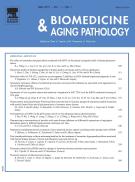Isoorientin protects BRL-3A rat liver cell against hydrogen peroxide-induced apoptosis by inhibiting mitochondrial dysfunction, inactivating MAPKs, activating Akt and scavenging ROS and NO - 18/09/13

Abstract |
Isoorientin (ISO) is a flavonoid compound, and possesses a significant antioxidant potential. However, the effects of ISO on the oxidative damage in normal hepatocytes remain unknown. The present study investigated the protective effects of ISO on H2O2-induced apoptosis in buffalo rat liver (BRL-3A) cells. The results showed that H2O2 induced cell death in a dose-dependent manner, pretreatment with ISO significantly (P<0.01) increased the cell viability in a concentration-dependent manner, and no significant toxicity was found in ISO-treated cells. ISO notably decreased the loss of mitochondrial membrane potential (MMP) and the protein expression of Bax, cytochrome c (in the cytosol), cleaved caspase-3 and PARP, and ultimately reduced H2O2-induced BRL-3A cells apoptosis. Meanwhile, ISO also remarkably restrained the activation of ERK1/2, JNK and p38, and the inactivation of Akt induced by H2O2. Furthermore, ISO significantly reduced H2O2-induced reactive oxygen species (ROS) and nitric oxide (NO) production by elevating total superoxide dismutase (T-SOD) and catalase (CAT) levels, and inhibiting the expression of inducible nitric oxide synthase (iNOS). These results demonstrated for the first time that ISO is able to protect BRL-3A cells against H2O2-induced apoptosis by inhibiting mitochondrial dysfunction, inactivating MAPK kinases, activating Akt, and scavenging ROS and NO.
Le texte complet de cet article est disponible en PDF.Keywords : Isoorientin, Oxidative damage, Apoptosis, Mitochondrial dysfunction, MAPK kinases, Akt
Plan
Vol 3 - N° 3
P. 153-159 - juillet 2013 Retour au numéroBienvenue sur EM-consulte, la référence des professionnels de santé.
L’accès au texte intégral de cet article nécessite un abonnement.
Déjà abonné à cette revue ?

